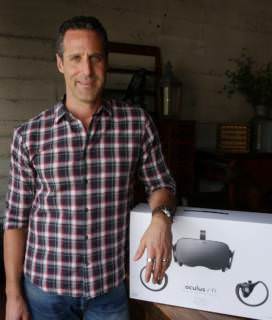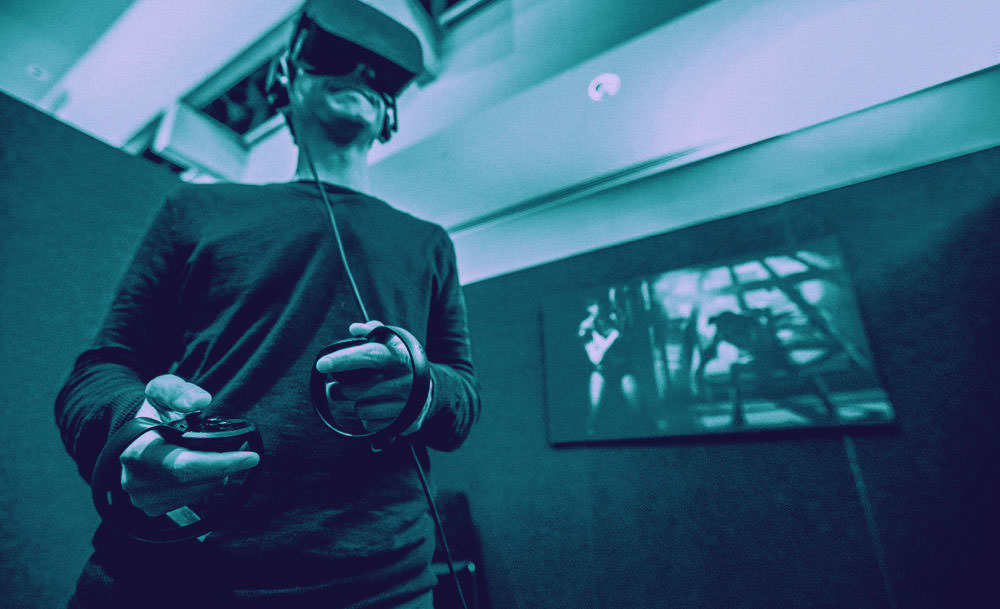Oculus is well into its “Summer of Rift” campaign, which is comprised of multiple promotions such as a temporary price reduction to $399 for the Oculus Rift headset and Touch controller bundle, free-to-play weekends for select titles and a partnership with Intel and ESL to create a VR esports league featuring the games Echo Arena and The Unspoken. All of this culminates into a major push to bring virtual reality to the mainstream that rests on two critical points: affordable hardware and a broad library of content to support it.
Jason Rubin, vice president of content at Oculus VR, recounts how there was no content available when he joined the company three years ago. The Oculus Rift headset launched with 30 titles 19 months ago, and another 30 titles were added when the Oculus Touch controller came out in December. Now there are currently over 500 titles in the Oculus Store, and 200 of them are for Touch, which has become the fastest growing segment of the market, according to Rubin.

“We found that most users who bought Rift before Touch came out went out and bought it, and now they’re pretty much selling at a one-to-one ratio,” said Rubin, discussing the growth of VR. “I think the last few months have really marked a turning point. When we went to GDC, we talked about this being the year of content, and that’s happened between GDC (March) and now.”
Rubin explained how the conversation around VR has changed from what people should look forward to, to what people should looking to buy right now.
“That sounds minor, but it’s actually very important to our ecosystem,” said Rubin. “We have now reached the point where the average consumer can take something home, and we have a wide enough library so that they’ll not only find a few things to like, but find things that they’ll get to like.
Oculus is launching over a title a month this year, building up its backlog of content. Rubin emphasizes how this is an important moment in an ecosystem because it’s the point where the utility and entertainment value of the product outweighs its cost.
“We’re now getting to the point where content made for VR is truly utilizing VR strengths and creating entertainment that’s very different from what anyone else has seen,” Rubin continued. “With the [Marvel Powers United] and other upcoming announcements, you’re going to see bigger IP and bigger development studios and publishers getting into the business now that it’s growing. But we never thought it was going to be instant success for VR—we always knew it was going to take a long time. You can look back at any of our statements, especially Mark Zuckerberg’s statements, [to know] how long it was going to take for VR to become mainstream, but we’re shifting into second gear and third gear is on the horizon. We have a very specific plan that we’ve stuck to—financing great content and bringing down the price point.”
Talking with AListDaily, Rubin discussed the evolution of VR content at Oculus. He said that, although launch games such as Chronos and Edge of Nowhere remain popular, they were largely experimental and didn’t really address why consumers would want VR in their homes.
That changed when Crytek released The Climb in April of last year, which gave users a true sense of tension as they climbed up a mountainside. The Climb has since become the best selling and most demoed game on the Oculus platform.
Things are bound to grow even bigger and better. According to Rubin, the launch of Robo Recall in March marked the second generation of VR games.
“Everything is coming together to make a much better wave of content than the first generation,” said Rubin. “This is normal with a console, so this is exactly how it should be going. The next generation of software is going to be unbelievable.”
The Next Phase Of VR
With the two biggest challenges, price and content, being dealt with, Rubin discussed the next major hurdle for mass adoption of VR.
“The largest hurdles were price and content, but with those things fading into the distance as issues, our biggest challenge is getting people to understand what VR is and why it fits in their lives. Over time, we’re positive that that’s going to work itself out. You work that out by getting as many people into VR as you can, and they become your proselytizers. Anyone who is on the fence—they see the price then see the reaction on Reddit and it becomes an instant buy. When everyone has VR, their friends want to know what it’s like, and when they play it, that becomes another sold person.”
VR will spread by usage, according to Rubin.
“It’s slow at the beginning, but things that are exponential start slowly and then they burst. I think VR is going to go through that process. It took a while to get the first 100,000 people in it, a little longer to get next wave in, and it will eventually get to the point where everybody knows someone who has tried VR and then it will spread quickly. Especially if the price goes down the content keeps getting better. It’s a pretty simple formula for us because the product is so good. If we had something harder to sell, we’d be in a much tougher situation. But we’re in a world where you put it on people’s heads and they say that they want it.”
However, it’s often hard to see ahead with a slow process. In December, analyst company SuperData singled out VR as the “biggest loser” of the holiday season.
As recently as June, Rikard Steiber, president of HTC Viveport and senior vice president of VR, admitted that VR had a marketing problem. It seems like the days when Oculus was featured in Time Magazine are long gone as enthusiasm for the technology has died down, but Rubin believes that this is an unavoidable part of the process.
“We’ve been saying since the beginning that it was going to take a while for VR to become mainstream,” said Rubin. “But there are forces around any new technology that we can’t control.” He then described how, with any technology, there’s a hype curve that’s followed by the trough of disillusionment and the eventual acceptance and mass market appeal. Rubin admitted that the hype phase was over, and now we’re in the disillusionment phase.
“The reality, which we always knew was going to happen, has happened,” Rubin said. “I think that over the next year or two, people are going to come out of that and realize that a lot of people have this and really like it. More people are jumping into this, more game developers are developing for it and more movie studios are getting involved. All of this is happening, and [VR] is not going away. We’re just in the moment where we’ve gone past the hype and can’t ride on that anymore. We’re in reality, and reality is going to take off, and we’re going to be just fine.”
Getting People Into VR
Partnering with Intel and ESL to create the VR Challenger esports league is an important step in getting more audiences used to VR.
“[Consumers] are constantly bombarded with words, advertisements and calls to action,” explained Rubin. “For example, every food has the word ‘extreme’ in front of it, to the point where no one pays any attention to it anymore. In our world, I think the equivalent word is ‘immersion.’ We tell you VR is immersive and bang you over the head with how it takes you to another place, but if you haven’t put it on your head or haven’t seen someone use it, which is still the vast majority of the world, you just ignore that word.
“The beauty of a sports league is that you see people using VR. You see them moving around with the headset on and how into it they are. Then they start to understand why it would be interesting. Instead of seeing a beautiful model in a straight pose or random words thrown out by a well-meaning article writer, they’re watching someone who is incredibly good at what they’re doing and they can picture themselves doing that at home. It’s very important to give people an aspirational reason to pick up VR. That’s also the reason why we have Best Buy demos. Giving people the ability to put on a headset is the number one way to convince them VR is going to work.”

